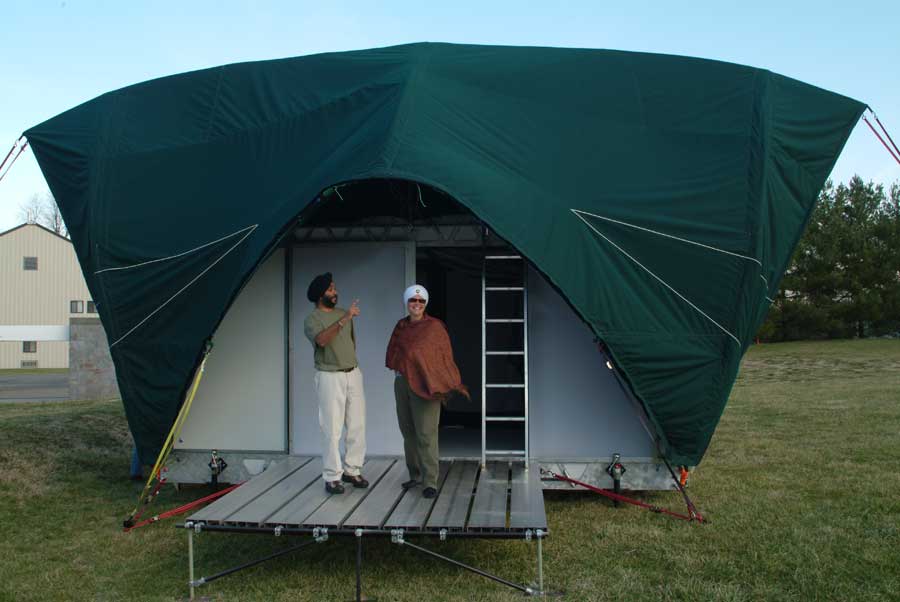University veterinarian and professor prepare for year in Tanzania

"Send chocolate." That is how Virginia Tech's University Veterinarian Dr. Taranjit Kaur responds to those who ask what they can do to assist her and her family while they are living deep in the African bush.
Kaur, an assistant professor in the Department of Biomedical Sciences and Pathobiology in the Virginia-Maryland Regional College of Veterinary Medicine (VMRCVM), her husband Dr. Jatinder Singh, and their three-year old daughter are busy preparing to depart for Tanzania on a year-long research project designed to establish a health monitoring system for chimpanzees in the region.
The project is sponsored through a prestigious five-year National Science Foundation CAREER grant awarded to Kaur in 2003 so she can develop a more "wholistic" system for the integration of technology, research and education.
The family will be living in a unique portable laboratory/residence near Lake Tanganyika, the second deepest lake in the world, in the Mahale Mountains National Park on the western border of the east African nation. With over 700 chimpanzees, the park is believed to host the largest population of the endangered animal in the world.
Kaur and Singh, a research assistant professor in the Department of Biomedical Sciences and Pathobiology, will be helping Tanzanian National Park Authority (TANAPA) officials develop science-based management strategies to protect the free-ranging chimpanzee population from tourism related problems like disease transmission, habitat destruction, and competition for resources. Because of genetic similarities between chimps and people, both are highly susceptible to influenza, tuberculosis and other infectious diseases.
While they are in Tanzania, the family will be living and working in a structure known as Portable Laboratory on Uncommon Ground or P.L.U.G. Under the direction of Matt Lutz, an assistant professor in the College of Architecture and Urban Studies, a team of Virginia Tech students designed the one-of-a-kind building. P.L.U.G. weighs less than a ton and can be assembled and disassembled in only a few hours by as few as two people using no tools.
High-tech and completely environmentally friendly, the building has been designed so that it will leave no trace of its existence once it is removed from the national park, according to Kaur. The building will function much like a living organism, Kaur said, adding that it fits unobtrusively into its surroundings, uses solar power as its energy source and can be easily moved from site to site.
P.L.U.G. began its journey to Africa on March 28 when it was disassembled, packaged, and loaded on a truck to Norfolk, where it was then placed on a ship bound for Dar Es Salaam, the capital city of Tanzania.
In addition to P.L.U.G., all other supplies for the year-long expedition were also shipped to Africa on the 28th. This included laboratory and computer equipment, a forty-foot shipping container filled with enough food to last the family a year and other related supplies.
When asked how the family would cope with the natural hazards of life in the African bush like poisonous snakes, leopards and other African animals, she replied: “We’re all going to live in harmony.”
A 16 foot aluminum fishing boat powered by an outboard motor will serve as the family’s main means of evacuation should the need arise, said Dr. Kaur.
A national independent film production company recorded the entire packaging process. In addition, the crew will possibly be accompanying Dr. Kaur and her team in Africa for a documentary on their research efforts.
Kaur and Singh, their daughter, Lutz and four students—two from the College of Architecture and Urban Studies and two from the VMRCVM—will leave for Africa in May. While the others will return after a few weeks, Kaur and her family are not expected back in the United States until May 2008.




